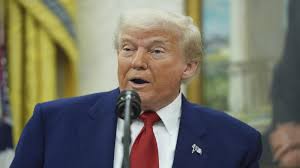Day after getting struck down, US court temporarily reinstates Trump tariffs

Washington, D.C., May 30, 2025 — In a swift legal turnaround, a federal appeals court has temporarily reinstated former President Donald Trump’s controversial tariffs. This decision came only a day after a lower court ruled them illegal. The move revives uncertainty in U.S. trade policy and reignites debate over presidential powers.
From Court Defeat to Temporary Victory
On May 28, the U.S. Court of International Trade ruled Trump’s sweeping tariffs unlawful. The court said he overreached by using the International Emergency Economic Powers Act (IEEPA) to justify a 10% tariff on nearly all imports. The administration had cited national security and drug trafficking as reasons, but the court disagreed.
Just one day later, Trump’s legal team appealed the decision. The U.S. Court of Appeals for the Federal Circuit granted an emergency stay. This temporary ruling means the tariffs will remain in place while the case is under review.
What the Court’s Stay Means
The court’s stay doesn’t mean it agrees with the Trump administration. Instead, it wants time to examine the case. The court expressed concern that lifting the tariffs could cause economic harm or affect national security.
Trump’s team claimed that removing the tariffs could trigger a flood of cheap imports. They argued it would hurt American businesses and weaken U.S. leverage in global trade talks. The appeals court agreed to pause the lower court’s ruling to avoid immediate disruption.
Political Firestorm Ignites
The decision has sparked fierce reactions across the political spectrum. Trump, currently campaigning for re-election, has doubled down on his trade policy. At a rally in Ohio, he called the tariffs a bold move to protect American workers.
“Globalists want to keep us weak,” Trump told the crowd. “We’re not handing our factories and jobs over to foreign countries anymore.”
Supporters argue that the tariffs promote fair trade and protect U.S. manufacturing. Critics see them as economic self-harm. Several economists warned that the tariffs could push up prices on common goods, including electronics, clothing, and food.
Rising Concerns Among Businesses
Retailers and importers have already felt the effects of the uncertainty. Many had started renegotiating contracts after the initial court ruling. When the stay was announced, they had to reverse course once again.
“We were ready to adjust prices and cut costs,” said Raymond Lin, CFO of a tech company in California. “Now we’re back to square one. We don’t know what to expect next quarter.”
Small businesses feel the pressure more than large corporations. They lack the flexibility to absorb sudden cost shifts or change suppliers quickly. The National Small Business Trade Coalition, a key plaintiff in the lawsuit, expressed frustration. The group accused the Trump administration of dragging out a legal battle that hurts entrepreneurs.
A Constitutional Clash Brews
The legal case isn’t just about tariffs. It’s also a test of the president’s authority in economic matters. The plaintiffs argue that only Congress can impose broad tariffs under the Constitution. They say Trump’s actions stretch emergency powers beyond their limits.
Trump’s legal team sees it differently. They maintain that national security justifies bold action. The team is also exploring new legal tools. One option involves Section 122 of the Trade Act of 1974, which allows temporary tariffs for economic emergencies. This route could permit up to 15% tariffs for 150 days without needing a court decision.
Legal analysts expect the case to reach the Supreme Court if the appeals court doesn’t uphold Trump’s tariffs. “We’re watching a potential landmark case,” said Leah Navarro, a law professor at Georgetown University. “The outcome could reshape how much power the president holds over the economy.”
Global Reactions and Economic Fallout
International leaders have voiced concern. Some governments hinted at possible retaliation if the U.S. keeps the tariffs in place. Trade partners worry this could unravel years of cooperation on global trade rules.
Organizations like the World Trade Organization (WTO) are also monitoring the situation. Although the U.S. argues national security exemptions, other countries might follow suit and introduce their own trade barriers. Experts fear this could damage the global economy and slow recovery from recent recessions.
What’s Next?
Both sides will submit their legal briefs in early June. The plaintiffs have until June 5, and the Trump administration must respond by June 9. Until then, the tariffs stay active.
The future of these tariffs depends on how the courts interpret presidential power. If the appeals court sides with Trump, it could give future presidents more room to act unilaterally on trade. If the court rules against him, it would reinforce the role of Congress in shaping economic policy.
For now, businesses, consumers, and global markets must wait — and brace for whatever comes next.






